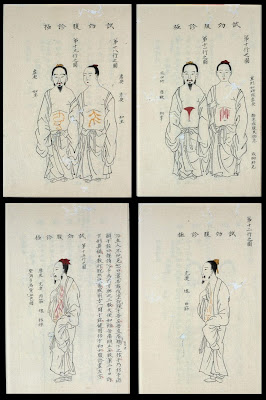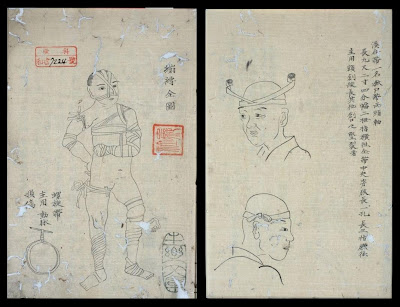
Tallah Pya-that. Funeral car and spire.

Threshing Paddy.

Yahan Chwa Thee. Rahan's procession.

Yok-thay-pweh. Marionettes.

Mee-eim-byan. Fire balloon.

[detail from] Sun-gyee-loung. A grand distribution of alms.
"The blessedness of alms-giving is a doctrine carefully taught by the Buddhist religion, and the people esteem it a favour to be allowed to offer to their Hpoongyis. After the long Lent (WAH) is over, many of the young novices leave the monasteries and return to the world.
A month later, in the month TA-SOUNG-MON [November] there is a grand religious offering in the early morning as shewn in our picture. The whole body of Monks in the district or quarter pass in file through a covered way, and each receives as much as he and his attendants can carry."

Nwah-leh-pyaing. Bullock cart race.

Pagoda Htee-smith. Htee-lot-thama.

[detail from] Hpon-gyee Kyoung. Monasteries.

Sin-mya. Elephants.

Burmese carpenter.

Cremation. Mee-thin-gyo-thee Hpon-gyee-bya.

Matayah-koung-eim. A Burmese house

Gaudama Buddha.
These watercolour sketches from 1897 were painted by a local Burmese artist. For each of the ~90 illustrations in the album there is an accompanying description by a missionary. 'Watercolour Paintings of Burmese Life' [Ms. Burm. a. 5] is online at the Bodleian Library at the University of Oxford. {note the thumbnail view button at the top once you click 'Open Item'}. All of the above images were loaded at full size (the details come from unspliced zoomify screencaps) and were very slightly cleaned up - removing pencil additions and some of the most overt page staining.















































